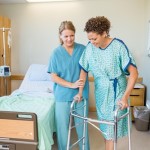AAOS president on changes, challenges faced by orthopedics industry
On the heels of the Comprehensive Care for Joint Replacement Model that went into effect Apr. 1, American Academy of Orthopedic Surgeons president Dr. Gerald Williams spoke on both the challenges as well as the powerful forward momentum of the industry, reported Becker's Spine Review.
"Medical advancements and increased regulations have dramatically changed the practice of orthopedics over the last 15 to 20 years. And it's just the beginning. Experts predict extraordinary changes in medicine in the next two to three years – changes that will far surpass the profession's transformation over the last century," said Williams.
Advancements in the field
According to Becker's Spine Review, Williams – who is also a shoulder and elbow surgeon at Philadelphia-based Rothman Institute – the newest technologies in the field of orthopedics have not only improved treatments but have also enhanced quality of life after surgeries. Growth and development of robotics, 3D printing and surgical grafting can help to improve a patient's mobility and even revolutionize precision in surgery, he noted.
Emerging challenges
Second to funding challenges, Williams noted that new mandates from the federal government and outside pressures that limit a surgeon's time with a patient are huge obstacles. The newly mandated CJR model that went into effect at the beginning of the month will change the way that many providers are reimbursed for knee and hip replacements, according to Forbes. Shifting away from fee-for-service toward bundle payments will affect doctors, surgeons and hospitals in one in every five metro areas in the U.S. However, not all hospitals are prepared and some may face penalties as a result.
New Comprehensive Care for Joint Replacement model by CMS is going to cause major industry disruption. @brucejapsen https://t.co/Lz2nwrzI7R
— Rita Numerof (@RitaNumerof) April 4, 2016
According to the CMS, the new model for joint replacement is intended to improve care for Medicare beneficiaries undergoing these two most common surgeries. Under the new mandate, hospitals will now be responsible for the quality and cost of all care that takes place from the day of the surgery through the next three months. The hope is that hospitals will work together with doctors and post-care providers to help improve patient satisfaction, quality of care and quality of life post-surgery.
Moving forward
Williams says that he hopes to help surgeons overcome these challenges that exist during his time as AAOS president. Noting the need to pressure Congress, he also urged his fellow surgeons to support research funding and organizations. If those in the field do not support themselves, no one else will either, he said. A more focused relationship between the CMS and the AAOS will be key this year to confirm that the role of experience-based clinical judgment is accredited in the guidelines. Moreover, strengthening the membership in the political action committee of the AAOS could have a huge impact on Capital Hill.
"Overall, we will be most successful if we remember two things — that there is strength in numbers and that the patient is king and queen," Williams said. "We must remind all those who have lost sight of our role, both outside and within medicine, that we are the patients' advocate. Period. End of story."
Moving forward the ultimate goal is collaboration across the industry and putting the orthopedic patients first.



